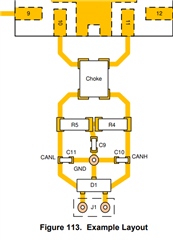Tool/software:
Hi team.
As you know, there is 120Ohms termination resistor for CAN and we need to use a single twisted pair cable (shielded or unshielded) with 120 Ω characteristic impedance (ZO). So do we need to make the PCB trace impedance also 120 Ω characteristic impedance?



